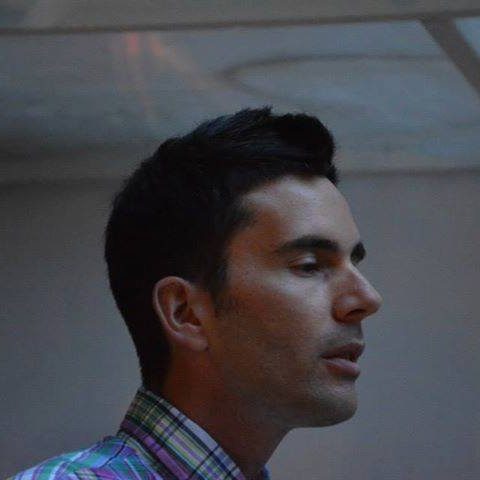You may find all of my publications here. Feel free to navigate among the different types of publications!
Publications
Filter by type:

Towards a surveillant reality in tennis
Here we attempt to present an application of epistemologically significant concepts that have already been described in depth in previous works. First and foremost, we refer to the dual paired method(s) of epistēmē, which is critically different from the scientific method due to a very common misconception ubiquitous among scholars and academics al over; but we also refer to surveillance, theory and truth, as well as the two new, save relevant, concepts of surveillant reality and experiential reality. The example is taken from tennis, a field to which one of the authors regularly contributes. We shall attempt to explore the ways in which the dual paired method of epistēmē is applied to sports science (in tennis) and, based on that, to clarify the concept and the differences between surveillant reality and experiential reality.

What Can the Great Traditions of Mankind Teach to Sports Scientists?
The ontology of Sports Science is well-defined with its various themes and subjects being studied
and presented in various works such as journal articles and textbooks, as well as by being in the
curriculum of the various university departments. However, there is much to discover when turning
our gaze somewhere else, to Traditions and Great Schools that have been dealing for many centuries
with the development of many aspects of what we now call “expertise”. On the spiritual side,
the Traditions included in this study extend from Yoga to Taoism and from the various Tantras to
Kabbalah. On the artistic side, Schools such as Iwama Aikido, Wing Tsun, and Russian piano School
have been considered. Classic Epistemology is also taken into account. Be it out of ignorance or out of
hesitance, seldom do we turn our gaze to discover the richness such Traditions have in so many aspects,
no less in matters pertaining to Sports Science. This paper is a first effort to map some of the most
important findings several such Traditions treasure and keep for their practitioners. The results of this
exploration consist of insights about overlooked performance parameters such as breathing, slow
practice, visualizations, sleep practices, basics, relaxation and psychotherapy.

Ontological Causality as the Demarcation Criterion of Scientific & Philosophical Fields: Things and Objects vs. Criteria vs. Processes
This paper follows an interdisciplinary approach through at least three disciplines, i.e. logic, ontology and sociology (of expertise). Its aim is to provide a useful tool for the fields related to the study of expertise to demarcate the various scientific fields. In the process several issues are also addressed; issues such as causation and negation that are equally important for this discussion but current literature does not and maybe cannot cover.

An epistemological framework to appreciate the limits of predatory publishing
The concept of “predatory” publishing, despite many studies of the phenomenon,
remains unclear. This paper visualizes this theme through an epistemological
perspective, and claims that conceptual limitations emerge from an impressionism of
idealization, the entrapment of cause and effect induced by a journalology-based
perspective, and entrenched fantasized extraction, imagination and divination of what
constitutes the truth, in essence, a path never followed by an epistēmōn. Reality, proof,
verification, recorded observations and their interpretations have been pivoted to fit
the theoretical flavor of the day, an entity one day being predatory, the next not.
Ephemeral judgements of predatory may have been built on boundless disregard for
common sense, and yet, these have led to some scientists’ apotheosis, almost
oblivious of the intangibility of “valid” or the infinitesimal continuum of “predatory”.
Maybe, fault-ridden authoritarian argumentative disabilities are at fault.

The Bridge between Abstract Biomechanics and Tennis Strokes
Abstract biomechanics, by definition, are biomechanics in theory, without any application
(therefore a geometrical representation of movement). When referring to (abstract) biomechanics
and to (applied) technique (“technical form”) their relationship is blurred, not to mention there is
no method to effectively make the transition from the former to the latter. In this paper, these
terms are explicated and the connection between them is restored through a bridge, called the
operating principle or mechanism of the technique. The exemplary field of application is the sport
of tennis. In tennis, the operating principle is not of course all that is needed to develop technical
form (the application of the theoretical model on one’s body). It is the first step from at least three
more, the other ones being the “reference points” and the shot teaching mechanism (the latter
being substantially different from the mechanism of the technical form presented here). However,
the idea of the operating principle (of the technical form) has never been presented before for any
sport. The implications of these insights are important both methodologically and for the
development of a teaching method for tennis technical form. Finally, this paper itself bridges two
gaps: theory to practice and epistemology to science.
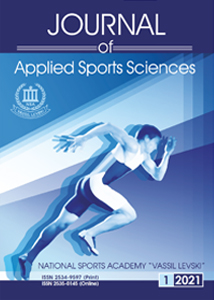
Palmaris longus muscle contribution to maximum torque and steadiness in highly skilled grip and non-grip sport populations
Background: The anatomy, origin, function, and appearance of the Palmaris Longus Muscle (PLM) in different populations are well studied. However, little is known about its contribution to wrist fl exion movements in sports. This study investigates whether the existence or absence of the PLM affects maximal torque output or torque consistency of submaximal wrist fl exion moment.
Methods: One hundred ninety-seven well-trained sports students were clinically examined to ascertain the presence of the PLM. Forty of them from different sport disciplines were assigned to two groups (athletes in handgrip sports: HG, athletes in non-handgrip sports: NHG). Their 80 upper limbs were divided based on the PLM-presence/absence and hand-dominance/non-dominance. Maximal Isometric Torque (MIT) at 150º, 180º, and 210º wrist angle, and torque steadiness at 150º and 180º, at 25%, 50%, and 75% of MIT were measured on a Humac Norm dynamometer.
Results: In all MIT tests, HGs signifi cantly surpassed NHGs, independently of the dominant or non-dominant side in presence of the PLM (p <.05). Steadiness was signifi cantly higher in HGs than in NHGs in dominant hands having the PLM, at 25% and 75% of MIT at both angles (p <.05).
Conclusions: It is concluded that the existence of the PLM provides an advantage in sustained handgrip sports (throwers, racquet sports, basketball, handball players), contributing positively to decreased torque variability and
higher maximal torque independently of muscular length. Important implications for sports performance and injury prevention have also resulted.

Force Steadiness during Submaximal Isometric Plantar and Dorsiflexion in Resistance Training: Experienced vs Non-experienced Individuals
The purpose of this study was to determine differences in force steadiness during submaximal plantar flexion (PF) and dorsiflexion (DF) of the dominant leg between individuals experienced and not experienced in resistance training. Forty males aged 18-32 were divided in two groups based on their experience in resistance training (experienced – not experienced). Evaluation of maximal voluntary isometric force was carried out on a Humac-Norm isokinetic dynamometer. The measurement of the maximal voluntary contraction (MVC) was measured in 3 isometric attempts. Then, the stability measurement of 10%, 30%, 50% and 70% of the MVC was assessed. The duration of the isometric contraction was 10 seconds but only 6 seconds were analyzed. T-test for independent samples and ANOVA was applied for the statistical analysis. The results showed that the individuals with more experience in resistance training presented a significantly higher MVC and force steadiness of the plantar and dorsiflexors muscles, compared with the individuals with less experience (p < 0.05). In conclusion, the years of practice with resistance training appear to have a beneficial effect on force steadiness.
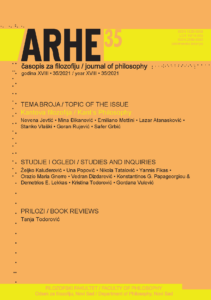
Epistēmē VS science
Is “science” the corresponding concept of its Greek progenitor, epistēmē? Traditionally, they were thought of as identical concepts. They are not, in more than one way, and the reader is called to evaluate them not based on their chronological order but on the specific systemic characteristics presented here.The crucial difference between the epistemonic (from epistēmē) method and the scientific method will also be presented.One of the main differences that will be discussed is related to logic, both as a concept and as a theory. What the authors present here is by no means a synthesis of past ideas; we do acknowledge that some similar ideas might have appeared in the past but never in the form presented here or within the system proposed in what follows. This work is not about who did not say whatever we propose or who might have some similar thoughts within some irrelevant context. All ideas here stem from original work done solely by us and the ensuing system is unique and of utmost important being also an external critique –the only trulyexternal critique –to the institution of modern science and to the grave inconsistencies “scientists” cannot (for whatever reason) notice in it anymore.

Verification in theory and in the sciences
In this work, we undertake the task of laying out some basic considerations towards straightening out the foundations of an abstract logical system. We venture to explain what theory is as well as what is not theory, to discriminate between the roles of truth in theory and in reality, as well as to open the road towards clarifying the relationship between theory and the real world. Etymological, cultural and conceptual analyses of truth are brought forth in order to reveal problems in modern approaches and to set the stage for more consistent solutions. One such problem addressed here is related to negation per se, to its asymmetry towards affirmative statements and to the essential ramifications of this duality with respect to the common perceptual and linguistic aspects of words indicating concepts akin to truth in various languages and to attitudes reflected and perpetuated in them and to their consequent use in attempted informal or formal logic and its understanding. Finally, a case study invoking the causes or “causes” of gravity both clarifies and reinforces the points made in this paper.

Towards the model of contributory expert generalists
The study of expertise has focused on the concept of specialization and specialists, both from a sociological and a biological perspective. It has been taken for granted that expertise concerns only specialization; even individuals characterized as “polymaths” or homo universalis are considered to be expert specialists in many fields. Can expert specialists in many fields exist today? This question is deceitful or irrelevant since it cannot accommodate the concept of individuals who are neither specialists nor “poly-specialists” but have knowledge of a different level: not analytic, but rather, synthetic and abstract. Here, a new type of expert is proposed, contributory expert generalist. Their necessity stems from the methodology of epistēmē proper. Their characteristics will be identified and discussed, some empirical examples will be given and their expert status is going to be discussed using various theoretical approaches on expertise, namely SEA, SEE and STS (Science of Exceptional Achievement, Study of Expertise and Experience, Science Technology and Society).

The Tennis SensoriMotor Synchronisation Paradigm
The author proposes a new Paradigm for both research and practice regarding tennis. Sensorimotor Synchronisation (SMS) is the scientific field studying how people may synchronise their actions to an external stimulus (a pacer). SMS provides the most relevant set of concepts to tennis because synchronisation with both the ball and the opponent is the most decisive factor for performance: ball directionality, early preparation and economy of movement are all affected by good synchronisation skills but not so much by reaction time. In martial arts schools, synchronisation is the golden chalice of superior performance, which leaves many questions about the choices that have been made in tennis. Here, after a mini-review of SMS-related concepts and terms, an SMS application to tennis will be proposed and some drills will be described for the first time. Not all questions will or can be answered here, however a new Research Programme should be emerging: as is the case in all Programmes and Paradigms, they cannot be directly tested but they offer the background for specific experiments to follow. Tennis SMS is also compatible with bioinformatics since expert systems may be developed to both monitor and improve synchronicity.

The Distal Method Coach Development for tennis: a new Paradigm in Coach Education
Coach Development Programs have multiple aims, for example, to provide trainers and educators with knowledge and tools, to keep them up to date or to refresh already known concepts. Distal Method is a generic method for motor-expertise attainment. It has been created based on findings from the scientific disciplines relevant to motor-expertise in order to develop world-class performers in motor-expertise-related domains. The Distal Method Coach Development (DMCD) for tennis is presented here. DMCD is in line with modern educational paradigms such as Physical Literacy (pedagogy), Deliberate Practice (Science of Exceptional Achievement) and the Secondary Synthetic Coach Model (SSCM). The aim of this article is twofold: i. to provide a broad overview of all the work done regarding the tennis DMCD over the years, and ii. to both fill the gap in tennis Coach Development systems and to provide a high standard in that area.
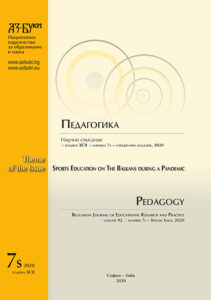
Online Coach Development Components: the Tennis Distal Method Coach Development
Taking for granted the new standards in sports in regard to the recent, still-evolving pandemic, Coach Development is seen through a new prism, based on the experience gained from an online tennis Coach Development course. At First, the role of the coach is discussed as an expert generalist and then the ideal components of Coach Development systems are presented. Finally, it is discussed whether these findings may be applied to online learning.
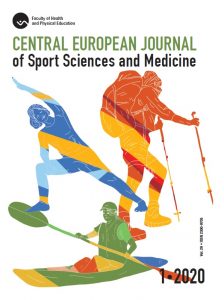
Online coach development and certification programs in sports: are they possible?
Anticipating the inevitable shift of coach education and Coach Certification Programs (CCP) to distance-learning platforms in the imminent future, I have attempted to identify obstacles that we are likely to face. After explaining the rationale and the potential benefits of such courses, I have identified
technique as the most difficult component to both teach and evaluate. A specific viewpoint regarding technique is briefly discussed and several related guidelines are provided to assist in both teaching (coach education) and evaluating technique (CCP) within the context of distance education.

On Sports Biomechanics Methodology
Sports biomechanics is one of the most fascinating and formalised disciplines in sports science. While it uses a host of methods, on closer look, it lacks a thorough epistemological / methodological foundation besides what it implicitly borrows from the sciences it uses, such as mathematics and physics. Here, I shall attempt to portray what such a basic epistemological understanding would include and also try to address issues directly related to such an approach. I shall start by describing the most general context in which sports biomechanics exist and then, I will attempt to provide a structural context to bridge the gap between sports biomechanics and practice. Concluding with some ideas about the future of biomechanics.

Logical Analysis and Validation of Publications in Bioinformatics
Taking as a starting point that the only proving method in mathematics is logic, as for example is used in the logical setup of the paper (arguments, i.e. premises leading to conclusions, logical inferences) we describe a new tool for analysis and validation of publications in the field of Bioinformatics.
In striking contrast to the abundance of statistical programs and packages available to Bioinformatics researchers, no such logical tool is available to them. Therefore, the creation of such a tool is necessary; a form of expert system that may do the following procedures:
- Evaluate papers giving a score of logical consistency and completeness (i.e. how many conclusions were investigated in comparison to all possible conclusions based on the set of premises used by the researchers).
- Help researchers and academics better plan their protocols by automating the process of analysis of the premises given.
- Be able to locate and analyze arguments directly from the text of the scientific paper, from certain parts of it (e.g. the “conclusions” section, or even from the whole text, based on advanced AI algorithms.
• Provide a new standard for future publications in any form and later, in any scientific field.
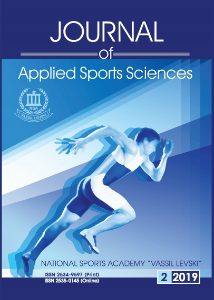
Exploiting the Cognitive-Physical-Emotional interconnection: Motowords and the Distal Method
Background: communication between the trainer and the athlete has been studied in terms of feedback, but not in terms of codifying information for instruction; here implications for cognition and cognitive skills is also discussed.
Purpose: to present a new tool, motowords, a verbal codification tool between the athlete and the trainer that also provides many side benefits: it helps adjust the Degrees of Freedom of a drill, it employs cognitive functions, it fosters active participation of the athlete and it bridges the gap between serial and random practice. Moreover, we intend to theorize on how the positive effects of motowords are multiplied when combined with drill-synthesis and drill-structure, as well as with differentiated (self)training, concepts that aim at increasing the ecological validity of training sessions.
Method: the theoretical background supporting the effectiveness of these tools is discussed.
Leads: to a broader vision about the important role of cognitive and emotional skills within a holistic context aiming at developing “literate” individuals rather than just motor experts, which, both the former and the latter, are at the very core of the Distal Method for expertise attainment.
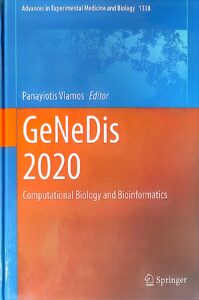
Expert characteristics: implications for expert systems
While expert systems are Artificial Intelligence (AI) agents, they share many common characteristics with human experts. As technology progresses, such systems are not just able to make simple decisions following “simplistic” linear logical protocols; they “behave” as real experts in at least two ways: by demonstrating superb decision-making skills and by conforming to the social norms for expertise, i.e. they “feel” as human experts. A review of the common characteristics of human experts may have important implications for the direction of the development for such systems. Implications for bioinformatics and future research (esp. concerning the accompanying concept of “expert generalist”) are also discussed.

The predicate fabric of abstraction: the hard test of logical inversion
The paper starts with an ultra-compact deposition on the two ubiquitous complementary dual pairwise organized methodological procedures of episteme, i.e. the analytic method (analysis – synthesis)& the abstract process (abstraction – structure). Next, the authors examine some ground rules and concepts pervading causality and inference and their junctions, attempting to discriminate between information flow in empiricism and theoretical causality of proof; only then is a connection between them attempted and investigated. In the authors’ effort to establish a consistent theoretical outlook, if not approach, the technique of logical inversions is also used as a partial yet powerful guide elucidating how successful their attempts were. Apart from clarifying some opaque concepts in logic, in set theory and in the staple empiricism of science, this paper also sets the stage for questioning whether some grave flaws could be located in traditional, save ill-founded, notions in hardcore science, on occasion of the par excellence typical example of fundamental and never challenged approaches in physics. The fact that something has been accepted as holding does not at all mean that cracks may not be located in its epistemological makeup at some posterior time. And it is the text’s task here to ask some painful questions and try to set some realistic boundaries to things by aptly utilizing available irresistible standard «tricks» from logic and from the classical scientific method and from reverting to fruitful techniques and to telling examples, pushing hard for convincing answers.
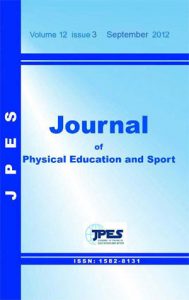
The distal method: From psychomotor education to motor expertise
A unifying theoretical model for motor expertise attainment is presented. Based on an extensive theoretical background several practical applications are discussed examples are given and guidelines are proposed. The main tenets of this approach called “The Distal Method” is that motor expertise development should be based on i. processes that impact the future and not (necessarily) the present ii. motor skills and cognitive skills are coupled iii. emotions are the substrate for any development to take place. The basic tools of such an approach will be presented here which could act both as a guide and a model – or even a paradigm – for successfully developing and refining psychomotor skills from early on.
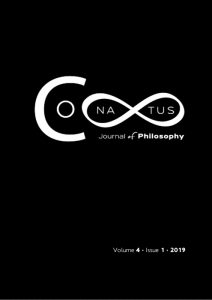
The Analytic Model of Consent and the Square of Opposition
Modelling consent is a process prior to any discussion about it, be it theoretical or practical. Here, after examining consent, I shall attempt to present a “logical generator” that produces all different cases of consent (and/or of non-consent), so that afterwards we may articulate a two-dimensional model which will enable us to coherently demonstrate all possible types of consent. The resulting model will be combined with Aristotle’s square of opposition, offering us even greater insight. I shall claim that full(y) informed consent is an archetype, not realized in most cases; it is just one case out of hundreds more. I shall conclude with an educational model for consent, the principle of specificity, arguing that if we wish to both understanding consent and become more adept in exercising it, we need a targeted educational system – not just “better education” in general.

Theatre pedagogy and the Distal Method in psycho-social development (Greek)
The triple identity of the empowering action coordinator (a poor translation usually used is “animator”) includes the roles of the scientist, of the artist but also of the healer – the mediator to higher consciousness levels. The paper goes on to locate theatre pedagogy within the paradigm of the Distal Method; actually quite a widespread one, since theatre pedagogy may be used for many purposes, either in isolation or in combination: as a psychotherapeutic tool, as a learning tool, as a social and emotional developmental tool, as the context of training (style), or as just fun.
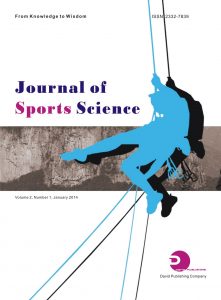
Physiological Changes after One Month of Exclusive Supplement Consumption and Exercise: A Case Study

On the Methodology of the Analytic Method: Historical Account, Epistemological Suggestions, Stages
In this paper we attempt a good unearthing, sound tackling and effective pointing out of the critical key features permeating one of the two cornerstones supporting the total coordination and interplay underlying the complex epistemonic and scientific method: and that would be the constituent methodology concisely known under the cover name “analytic method”. In this attempt, however, it becomes evident very soon that the direct similarities, reciprocities and complementarities to the other cornerstone, concisely known as “abstractive method”, must also be laid out concurrently; the two share the same needs and behaviours, while they must also be mutually disambiguated and framed in inner consistencies and mutual contrast, to assert proper theoretical coverage, fruitful application and mutual impermeability overall. Thus, both of them end up being discussed in parallel. To that end, simple and intuitively appealing proposals are sought, expressed and projected, regarding their key attributes, range and boundaries, both generally and especially in between them; their defining points and most essential requirements are sought out and expressed, their functional standards are suggested and the stages of its application are prescribed, according to a shadowy yet rigorous gradual breakup and assembling procedure derived from elementary combinatorics and set theory. All this gets illustrated in the schematic stages to be pursued in two relevant enlightening analytic examples, chosen so as to also partake of a crucial share of an abstractive aspect. Two relevant issues are touched upon along the way in the vein of the present tone of quest, namely those concerning basic prerequisites of logic employed and the confusion and effective double-talk underlying the term “theory” (vs. “theories”) and the consequent term-induced ambiguity in the concepts. On the subject, analysis is the breakup of an “entity” into its “components” and synthesis is its retroactive operation, or “return”, from “components” to the “entity”. Similarly, “abstraction” is the course from an entity to a nesting of successive general categories, and “structure” is the other way around from more general categories towards smaller contained assemblages of entities, each uniformly exhibiting “partial manifestations” of the said categorical feature. The semantic context and its set-theoretical implications are of paramount importance here. What is definitively taken as a “unity”, in each case, is a matter of choice, and of mutual and binding agreement among the parties conducting the study and its discussion. Beyond that, figuratively speaking, the analytic method concerns “anatomical autopsies” digging into such unities constituting elements or members of sets, whereas the abstractive method concerns attributes connecting sets of such “unities” and their nested supersets and subsets. We close by sketching the stage-by-stage application as illustrated in two case-studies: one from Cultural Studies, regarding a model, focusing on the primitive ternary ritual of the performing arts [ΚΛΜ], discussed complete with some key side issues, and accompanied by considerations on the triple of the material arts [ΧΨΩ], and then one from Bioethics regarding all possible partial and combinatorial constituents in consent models.
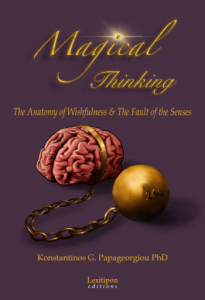
Magical Thinking: The Anatomy of Wishfulness & the Fault of the Senses
Magical Thinking –the book– is a homage to cognitive biases. It is directly connected to the author’s personal experiences, modified through his writing style in order to become as educative as possible for his students.
Cognitive biases are not just interesting and amusing stories; they reflect the very deviation of our culture, our educational systems and our way of seeing, and thus forming, not only “our” world, but the world of the generations to come.
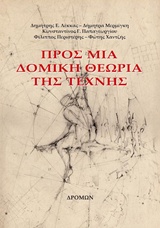
In Between Science, Ethics & Art (Greek)
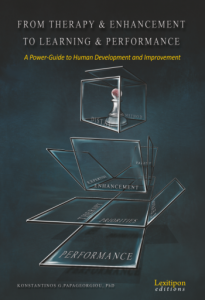
From Therapy and Enhancement to Learning and Performance
Therapy, learning, enhancement, performance: four words that reveal the broad scope of this book; four words that are not just four separate subjects; revealing their interconnections is the main focus of this book. Subjects, ranging from C. Jung’s psychoanalysis to K.A. Ericsson’s Deliberate Practice, or from R.G. Hamer’s “New Medicine” to the author’s Distal Method, all these give a deeper meaning to the book’s title – a fresh outlook on these overused words.
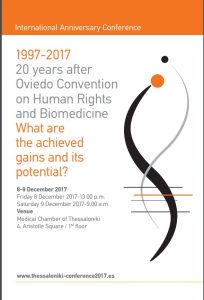
20 years after the Oviedo Convention on Human Rights and Biomedicine
Attempting to link these three concepts and to see what each of these means for the other

The Subtle Colourings of (informed) Consent in Sports Doping
It discusses in what way do athletes consent in using doping; can it just be a matter of black and white, consenting or not consenting? I argue that it is a more complex process and I suggest a method for exploring consent types.
After presenting a multipole of consent-cases, I argued that it is not just a matter of black or white as far as consent is concerned for the doped athlete. The athlete, any athlete, may come from the most diverse environments being forced to succeed at any cost; forced by whom? By their peers, their trainers, their broader environment. For the athlete, it may be a matter of life and death (as it was for e.g. USSR athletes, or as it partly is now for athletes who have spent a fortune in training academies only to try to make amends with their future success).
The very knowledge background of an athlete, or of their team, also plays a crucial role in their decisions. Issues of trust, ignorance, too much goodwill, wishful thinking, even habit, all come into play. Hence, we need a consent system that accounts for all these cases – and even more. How do we produce such a system? Should we create a catalogue of real cases and then try to find an adequate form of consent?
In contrast to usual scientific practices, this is both sub-optimal and contramethodological. Taking as our starting point the analytic method, we are able to create, a priori, all cases of consent; only after do we apply them (link them) to reality. Therefore, we get cases such as “uninformed consent”, “not uninformed consent”, “intentional uninformed consent”, but also “unintentional exposure”, “not unintentional protection” and hundreds of other consent-related propositions. The next step would be to attribute meaning to as many cases as possible and only then are we allowed to go to the world and discuss the athlete’s behavior in terms of consent.

The Subtle Colourings of (Informed) Consent in Performance Enhancement: Implications for Expertise
The analytic method, part of the epistemonic method, provides us with a way to cope with perplexed cases, without even referring to the world out there. We are able to predict all possible variations of consent, and go on forming minimum logical quadripoles, 8-poles, 16-poles, etc., before even trying to make any connection to the world. This way, there are two major outcomes: All possible scenarios are predicted, and, because of that, our “logical generator” produces scenarios we couldn’t even think of. Consent is, therefore, neither binary (existence or absence), nor just a continuum from existence to absence, but a cladistic tree stemming from the basic quadripole “existence of consent/not existence of consent/absence of consent/not absence of consent.” The complexity increases rapidly when other terms are included; try: “existence of informed consent” or “existence of unintentional consent.” More levels develop as we examine relevant terms, such as “exposure,” “protection,” or “consumption.” In our case-study, we shall examine how different aspects of consent are expressed regarding the issue of performance enhancement and consider some implications for the notion of expertise within an SEA (Science of Exceptional Achievement) context. Many different terms may describe the most common situations, namely, “uniformed consent,” “unintentional consent,” “non-intentional consent,” “not absence of consent,” and also, “unintentional exposure,” “intentional non-protection,” and so on. In Greek language, the possible variations are even more (there are two kinds of negation in Greek). All the aforementioned terms have different ethical consequences. We shall also examine whether doping is an inherent part of expertise attainment.
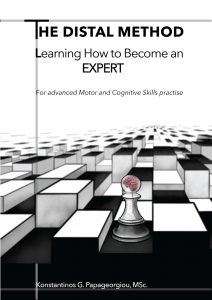
Distal Method is the product of years of research in the domain of motor and cognitive learning and performance. It is a method for attaining world-class expert performance in any domain that uses motor skills: surprisingly, not only in sports, music and art (as if they were not enough!), but also in many cognitive domains that rely on procedural memory or, more generally, may benefit from the tight motor-cognitive relationship. Based on this specific work at hand, the author has already published numerous journal articles and books.
ISBN: 978-960-93-9225-9
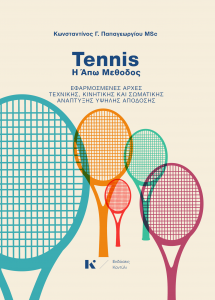
Tennis: the Distal Method -- Applied Principles of Technical, Motor and Physical High-Performance Attainment (Greek)
The basic textbook of the application of the Distal Method to tennis
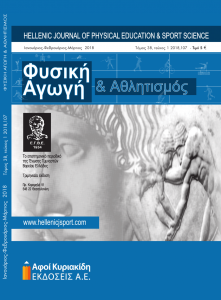
Performance Spiral effects on Motor Learning: the case of tennis serve
Performance-learning distinction necessitates the development of novel models to measure
performance meaningfully, i.e. in direct relation to the “invisible” learning. Such models should
have direct practical implications. Performance Spiral (PS) is such a model and incorporates
findings from motor learning & control disciplines (Contextual Interference, practice schedules,
dynamic system theory), Sports Training (speed-assisted / resisted training) and insights (Slow
Practice) from traditional major schools in music and sports. 11 subjects (age M=31, intermediate
level) in two groups, one control (6) and one PS-trained (5) were measured in speed and accuracy
progression of tennis serve, which would denote motor learning. After two months, while the
classically-trained control group did not show any statistically significant change in performance,
the PS-trained group increased their accuracy significantly. PS model is effective in producing
motor learning in tennis serve. These preliminary results are discussed and future directions are
given.
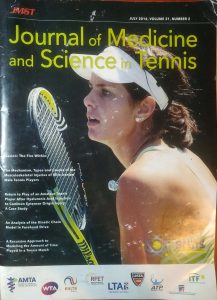
An Analysis of the Kinetic Chain Model In Forehand Drive
This article in JMST lays the foundations of the biomechanical model of the tennis Distal Method, as well as an application in the forehand drive (since applications are always important for such practice-oriented journals). The concepts presented in this article are relevant to the technique of all tennis shots.
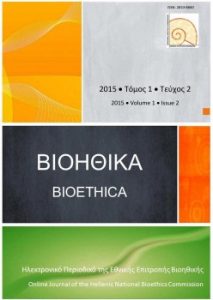
Talent as an unintentional agent
Unintentional exposure is a novel concept. No single person has coined the term. It mainly refers to
substances and activities affecting individuals without their consent – be it informed or not. In the
broader field of applied ethics in general, and of bioethics in particular, the scope of application
extends from nutrition (GM, functional food), to pollution (chemical-, air-, light-, noise-, radioactive
contamination etc.), climate change, embryo rights, drug side-effects (especially in regard to
chemotherapy), radiation (e.g. food), Permissible Exposure Limits, education and (bio-)terrorism. In
the discussion about talent and giftedness, there are two main approaches or schools of thought. On
one hand, talent is conceived as an exclusive agent, in that some individuals are born more capable
than others. On the other hand, a different school of thought advocates the modification of body and
mind of all individuals in order for them to achieve similar levels of high performance. In the first
case, individuals are bound to their nature, while in the latter instance they are prisoners of their
environment –two equivalent positions in terms of autonomy and freedom. The latter will be argued to
be the case; as a result, a connection with unintentional exposure will be established.
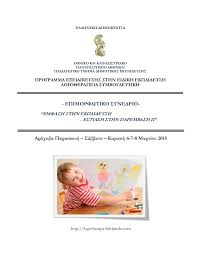
New ideas and directions about musical material in music-therapy (Greek)
Music therapy is an evidence-based clinical use of music to improve various aspects of the life of individuals, namely physical, emotional, mental, social and even spiritual ones. It is closely related to sound-therapy since sound, esp. periodic sound, is the material of music (however in sound therapy one may use sounds that are not periodical, such as white noise).
In its most general, life-quality-related form, music therapy may be used not only in clinical settings but in every setting where any of its benefits is relevant. It is not unusual to see athletes of every level and cultural background to use music to produce any kind of effect: from relaxation and arousal-adjustment to psyching up for competition.
Of course, the selection of music in such cases is more relevant to personal preferences and experiences, rather than a more “educated” selection of appropriate music – while the latter is not at all out of the question: the technology of music and sound therapy has improved so much and it is so wide-spread that even in YouTube there are plenty of works for such occasions (Hemisynch and Holosynch music, music with background frequencies, all of them for every possible effect: relaxation, concentration etc.). The Mozart effect (listening to Mozart to improve learning capacity) is also well known to many therapists and even trainers.
So, what we attempted is to evaluate the technical background of all this ocean of information, esp. of pure music, i.e., music without any additions (such as background frequencies). The main results were two, related to the Mozart effect as well.
- The music usually has effects related not only to some “objective”, “measurable” characteristics of it but mainly based on the listener’s background and preferences.
Regarding the measurable characteristics, the very same musical work may have different effects depending on the kind of intervals it uses, for example, the same Mozart work (we used “a la turca”) may have either a relaxing effect (just intervals) or a stimulating effect (Pythagorean intervals)
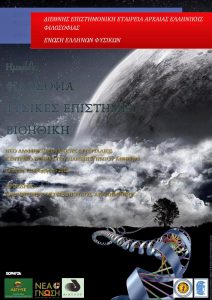
Epistēmē and (vs) Scientia
The identification of the terms epistēmē and scientia (>science) is considered given, both on the level of the signified and of the signifier. It is the first attempt ever to indicate the abyssal difference between these two terms; a difference resulting in grave consequences for the modern area of knowledge called science. Differences
pertain to the level of both terminology and methodology.
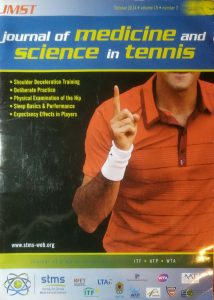
Deliberate Practice in Tennis
Is there a way of practice that is beneficial to tennis? Indeed, there is: Deliberate and well-structured practice. This article attempts to describe the model of Deliberate Practice (DP) and its potential applications to tennis
